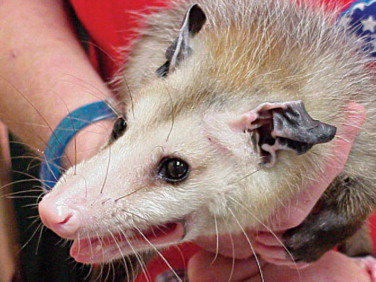
Virginia opossums (Didelphis virginiana) represent the sole marsupials in the United States, and we take pride in sharing our yard with them. Being nocturnal creatures, we rarely observe them directly, but our camera traps confirm their presence. Recently, we captured fascinating opossum behavior: the way an opossum utilizes its tail. Watch the video below that showcases the opossum tail in action!
The opossum tail serves to transport nesting material
Opossums employ their prehensile tails to transport nesting materials (leaves, twigs, corn husks, etc.) back to their dens. Here’s their process: opossums first grasp leaves with their mouths and then transfer them to their front feet, followed by their back feet. They curl their tails over the top of the bundle of leaves and carry this bedding as if it were a fifth limb using their semi-prehensile tails!
We have recorded this behavior multiple times with our trail cameras. The video below is our most recent capture, featuring an opossum collecting leaves and bringing them to its den, which is located roughly 10 feet from our house. We intentionally leave leaves on the ground during fall for opossums, woodchucks, and squirrels to utilize for their nests. Opossums do not excavate their own dens; our neighbor’s opossum occupies a woodchuck burrow. Leaves help line the den, providing extra insulation throughout the cold winter months.
Opossum tails function for balance while climbing trees
Although young opossums can dangle by their tails (if prompted), adult opossums are too heavy and do not hang by their tails. Instead, they utilize their tails for maintaining balance and stability on branches while ascending trees.
Opossum tails are not grips
Grabbing an adult opossum by the tip of its tail can inflict serious injury by dislocating its tail bones.
For more information about opossums, read our article Possum vs Opossum: What’s the Difference?